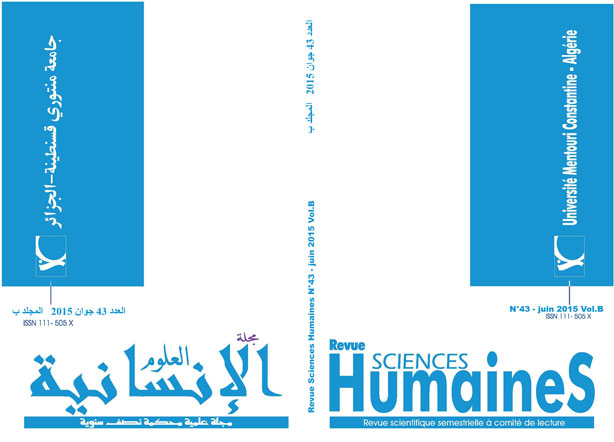The Effect of Dutch Disease on Trade Openness and Foreign Direct Investment in Algeria
الكلمات المفتاحية:
Dutch Disease، Resource Curse، Rentier State، Trade Openness، Foreign Direct Investmentالملخص
This study aims to explain the poor performance of trade openness and foreign direct investment recorded in Algeria the last few years. The period of the study extends from 2004 to 2013. Using a time series data type, a classic linear regression model has been adopted in order to test hypotheses and explain the relationship between natural resource dependence and the performance of trade openness and foreign direct investment. SPSS software for windows version 19 has been used for statistical analysis which revealed several findings, essentially that there is a negative relationship between natural resource dependence and trade openness and foreign direct investment performances, which means that an increase of resource dependence results in a decrease in both trade openness and foreign direct investment.التنزيلات
المراجع
Charlotte M. Levins, The Rentier State and the Survival of Arab Absolute Monarchies, Rutgers Journal of Law and Religion Vol 14, 2013, pp 388-423.
Rudiger Ahrend, How to Sustain Growth in a Resource Based Economy? The Main Concepts and their Application to the Russian Case, 5th OECD Economics Survey, September 2004, p3.
Ibid, loc cit, p1.
Michael Herb, No Representation Without Taxation? Rents, Development and Democracy, Comparative Politics, Vol. 37, No. 3, City University of New York, April 2005, pp 297-316.
Thorvaldur Gylfason, Lessons from the Dutch Disease: Causes Treatment and Cures, STATOIL-ECON Conference: The Paradox of Plenty, 22 March 2001, p1,2.
Owen Barder, A Policymaker’s Guide to Dutch Disease, Working Paper Number 91, Center for Global Development, July 2006, p4.
W. Max Corden and J. Peter Neary, Booming Sector and De-Industrialisation in a Small Open Economy, The Economic Journal, Vol. 92, No. 368, December 1982, pp 825-848.
Mohamad Tahar Benkhoja, Monetary Policy and the Dutch Disease in a Small Open Oil Exporting Economy, Gate, France, 22 December 2011, p2.
W. Max Corden and J. Peter Neary, 1982, op cit, p826.
Idem.
Milan Brahmbhatt & al, Dealing with Dutch Disease, The World Bank, Economic Premise, June 2010 No. 16, p2.
W. M. Corden, Booming Sector and Dutch Disease Economics: Survey and Consolidation, Oxford Economic Papers, Vol. 36, No. 3, November 1984, pp359-380.
Milan Brahmbhatt & al, loc cit, p2.
W. Max Corden and J. Peter Neary, 1982, op cit, p831.
E.g. Jefrey D. Sachs and Andrew M. Warner, The Curse of Natural Resources, Harvard University, European Economic Review 45, 2001, pp 827-338.
- Jefrey D. Sachs and Andrew M. Warner, Natural Resource Abundance and Economic Growth, Harvard University, November 1997.
- Michael Herb, No Representation, Without Taxation? Development and Democracy, University of New York, Comparative Politics Vol. 37, No. 3, April 2005, pp297-316.
E.g. Jonathan Isham & al, The Varieties of Resource Experience: How Natural Resource Export Structures Affect the Political Economy of Economic Growth, Middlebury College Economics Discussions Paper No. 03-08, April 2003.
- Simon Dietz and Eric Neumayer, Corruption, The Resource Curse and Genuine Saving, Cambridge University Press, 2007.
- Matthias Busse and Steffen Gröning, Governance and Natural Resources, Hamburg Institute of International Economics, 2011.
Thorvaldur Gylfason, loc cit.
International Monetary Fund, Algeria Country Report No. 14/341, December 2014.
World Bank Database, http://data.worldbank.org/indicator/NY.GDP.PETR.RT.ZS, viewed: 10/08/2015.
Trade openness index is measured by the share of import and export of gross domestic product.
the World Bank Database.
the World Bank Database.












